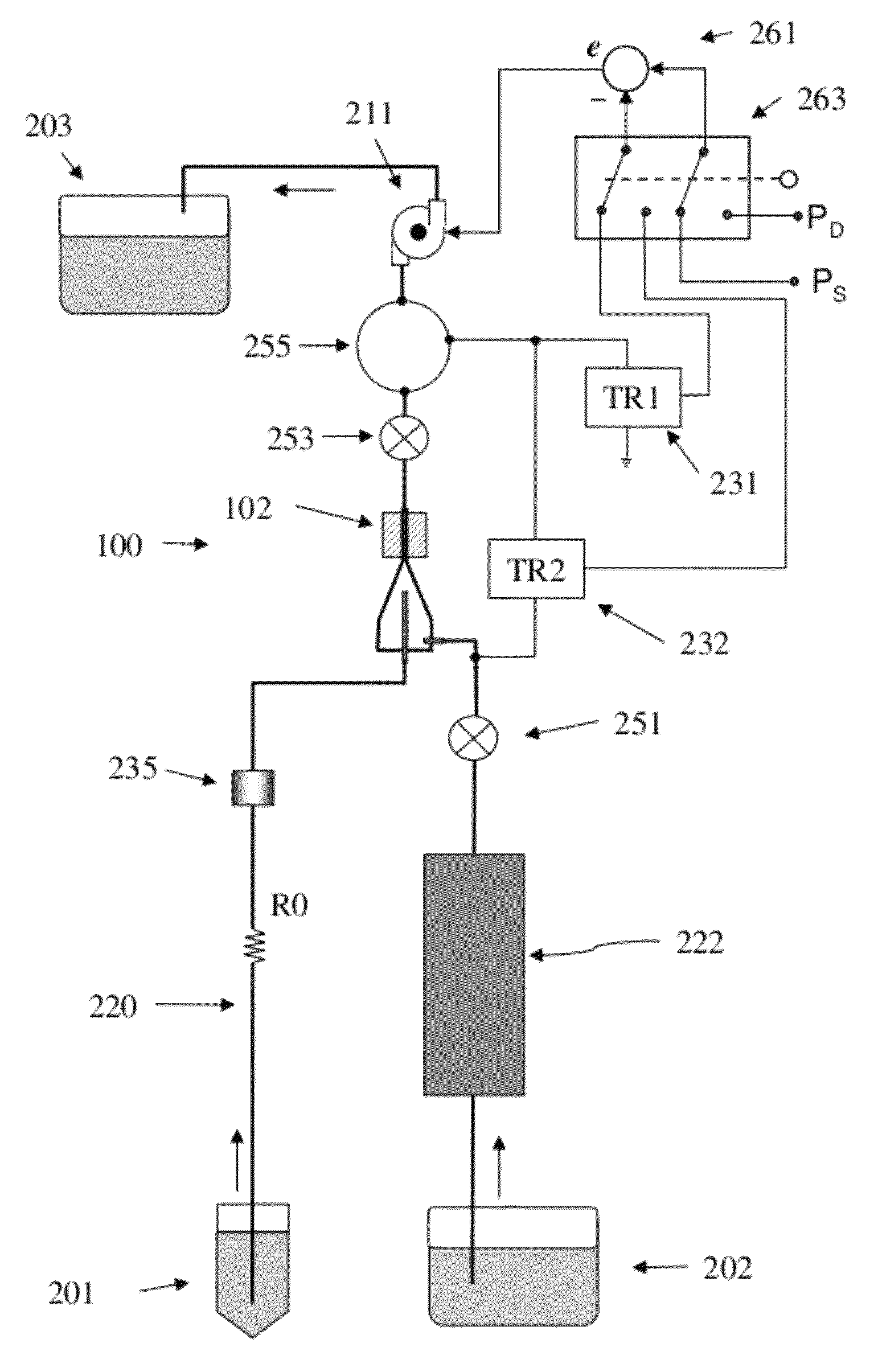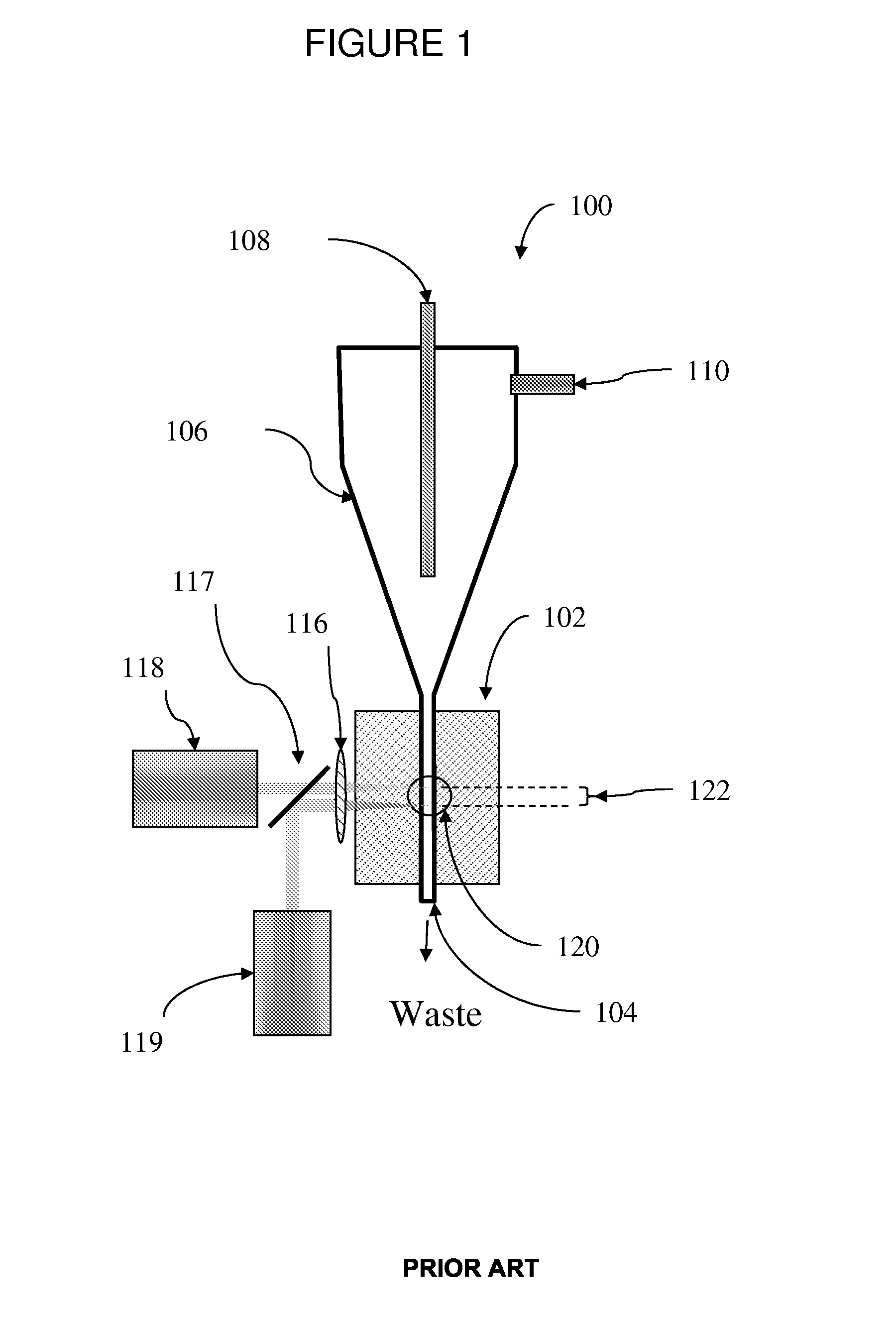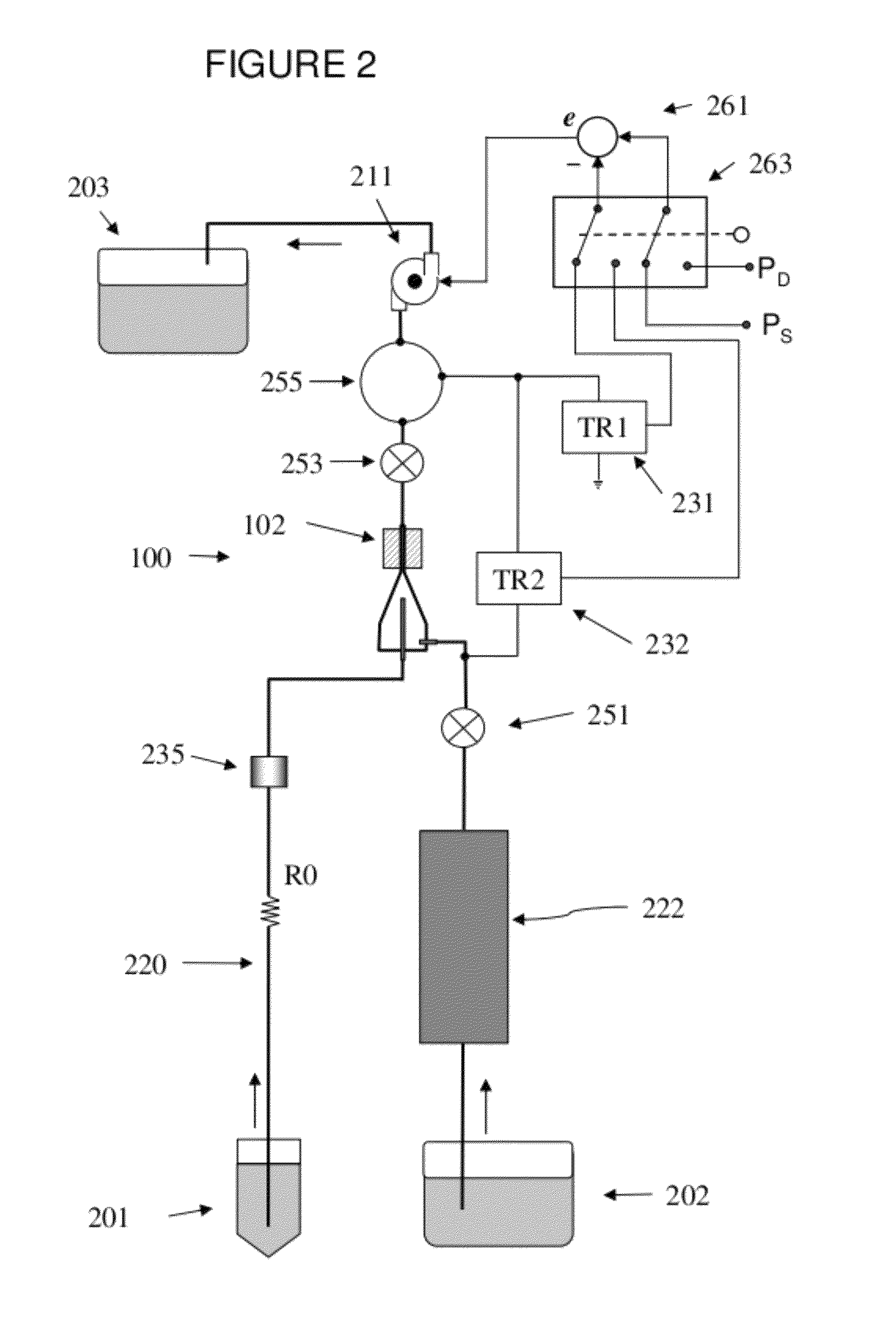Dual feedback vacuum fluidics for a flow-type particle analyzer
a technology of vacuum fluidics and particle analyzer, which is applied in the direction of instruments, fluid pressure control, process and machine control, etc., can solve the problems of complex design of pressure-driven fluidics systems, and achieve the effect of reducing large fluctuations in vacuum and constant flow ra
- Summary
- Abstract
- Description
- Claims
- Application Information
AI Technical Summary
Benefits of technology
Problems solved by technology
Method used
Image
Examples
Embodiment Construction
[0029]The following definitions are provided for clarity. Unless otherwise indicated, all terms are used as is common in the art. All reference cited herein, both supra and infra, are incorporated herein by reference.
[0030]A “flow-type particle analyzer” is used herein to refers to any instrument that analyzes particles suspended in a flowing fluid stream by passing the particles past one or more optical detectors, and includes, for example, analyzing or sorting flow cytometers, hematology analyzers, and cell counters. A flow-type particle analyzer contains at least two fluid sources, and the two fluid are combined by the system just prior to analysis. For example, a flow cytometer of the present invention analyzes particles suspended in a sample fluid that is hydrodynamically focused by a sheath fluid.
[0031]Sheath fluid refers to a substantially particle-free fluid that is used to surround the particle-containing sample fluid to achieve hydrodynamic focusing, as commonly practiced ...
PUM
| Property | Measurement | Unit |
|---|---|---|
| pressure drop | aaaaa | aaaaa |
| resistance | aaaaa | aaaaa |
| fluidic resistance | aaaaa | aaaaa |
Abstract
Description
Claims
Application Information
 Login to View More
Login to View More - R&D
- Intellectual Property
- Life Sciences
- Materials
- Tech Scout
- Unparalleled Data Quality
- Higher Quality Content
- 60% Fewer Hallucinations
Browse by: Latest US Patents, China's latest patents, Technical Efficacy Thesaurus, Application Domain, Technology Topic, Popular Technical Reports.
© 2025 PatSnap. All rights reserved.Legal|Privacy policy|Modern Slavery Act Transparency Statement|Sitemap|About US| Contact US: help@patsnap.com



